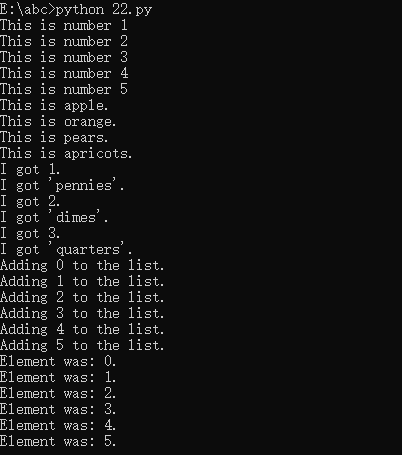the_count = [1, 2, 3, 4,5] for num in the_count: print("This is number %r" % the_count)
输出结果:

如果是要依次打印列表中的数字,则
the_count = [1, 2, 3, 4,5] for num in the_count: print("This is number %d" % num)
此时输出结果为:

这里只做两处修改:
1、格式化字符%r 改为 %d
2、print 一行中the_count 改为 num
the_count = [1, 2, 3, 4,5] fruits = ['apple', 'orange', 'pears', 'apricots'] change = [1, 'pennies', 2, 'dimes', 3, 'quarters'] for num in the_count: print("This is number %d" % num) for fruit in fruits: print("This is %s." % fruit) for i in change: print("I got %r." % i) elements = [] for i in range (0,6): print("Adding %d to the list." % i) elements.append(i) for i in elements: print("Element was: %d." % i)
输出结果:

其中append() 方法用于在列表末尾添加新的对象。extend()方法只接受一个列表作为参数,并将该参数的每个元素都添加到原有的列表中。